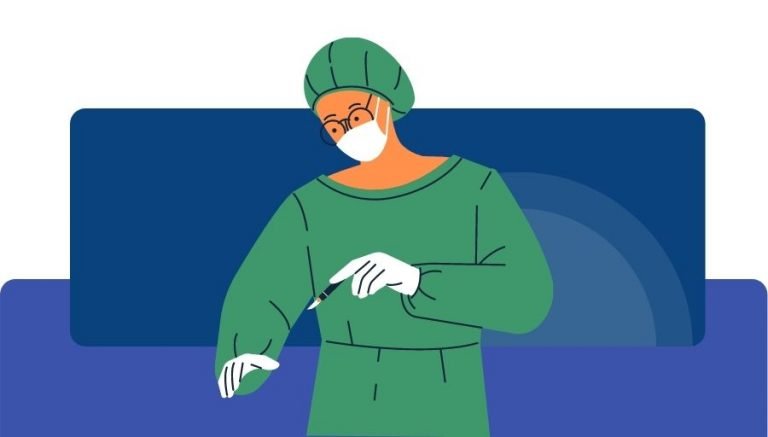Infestations By Ectoparasites – Definitions & ICD 11 Codes
Definition of Infestations By Ectoparasites: Diseases caused by parasitic organisms which normally live on the surface of the host.
Coded Elsewhere:
- Epidemic louse-borne typhus fever due to Rickettsia prowazekii (1C30.0)
- Recrudescent typhus (1C30.1)
Pediculosis
Definition of Pediculosis: A condition of the skin, hair, or genital region caused by an infection with the parasite Pediculus. This disease is characterised by pruritus. This condition also presents with symptoms depending on the site of infection. Transmission is by direct or indirect contact with an infected individual or animal. Confirmation is by identification of Pediculus.
ICD 11 Code For Pediculosis
1G00 Pediculosis
1G00.0 Pediculosis capitis
Definition of Pediculosis capitis: A condition of the scalp and hair shaft, caused by an infection with the parasite Pediculus humanus capitis. This condition is characterised by pruritus which may lead to sores or thickened discoloured skin. Transmission is by direct or indirect contact with an infected individual or animal. Confirmation is by identification of Pediculus humanus capitis eggs or Pediculus humanus capitis.
1G00.1 Pediculosis corporis
Definition of Pediculosis corporis: A condition of the skin, caused by an infection with the parasite Pediculus humanus corporis. This condition is characterised by pruritus which may lead to sores or thickened discoloured skin. Transmission is by direct or indirect contact with an infected individual or animal. Confirmation is by identification of Pediculus humanus corporis eggs or Pediculus humanus corporis.
1G00.Z Pediculosis of unspecified site or type
Myiasis
Definition of Myiasis: A disease of the tissues, caused by an infection with fly larvae from the order Diptera. This disease is characterised by a lump developing in the tissue. Transmission is by ingestion of contaminated larvae, direct contact with an infected mosquito, tick, fly, or indirect contact with infected fly eggs. Confirmation is by identification of Diptera from a tissue sample.
ICD 11 Code For Myiasis
1G01 Myiasis
Inclusions:
- infestation by larvae of flies
1G01.0 Ocular myiasis
Definition of Ocular myiasis: A disease of the eye, caused by an infection with fly larvae from the order Diptera. This disease is characterised by a lump developing in the tissue. Transmission is by ingestion of contaminated larvae, direct contact with an infected mosquito, tick, fly, or indirect contact with infected fly eggs. Confirmation is by identification of Diptera.
1G01.1 Nasopharyngeal myiasis
1G01.2 Laryngeal myiasis
1G01.3 Cutaneous myiasis
Definition of Cutaneous myiasis: The infestation of the skin or subcutaneous tissues by the larvae of certain flies (Phormia regina, Cordylobia anthropophaga, Cochliomyia hominivorax, C. macellaria, Wohlfahrtia vigil, W. meigeni, W. opaca, Dermatobia hominis, Sarcophaga krameri). characterised by a painful boil-like lesion containing one or more larvae with severe pruritus and local destruction of tissue.
1G01.Y Other specified myiasis
1G01.Z Myiasis unspecified
External hirudiniasis
Definition of External hirudiniasis: Infestation of the skin by leeches. Sensitisation to antigenic substances deposited in the skin can result in urticarial weals and bullae.
ICD 11 Code For External hirudiniasis
1G02 External hirudiniasis
Exclusions:
- Internal hirudiniasis
Pthiriasis
Definition of Pthiriasis: Infestation most commonly of pubic hair and less commonly of body hair or eyelashes by the crab louse, Pthirus pubis. Transmission is by direct, typically sexual contact with an infected individual. Confirmation is by identification of Pthirus pubis or its eggs.
ICD 11 Code For Pthiriasis
1G03 Pthiriasis
Inclusions:
- Infestation by crab lice
Scabies
Definition of Scabies: A highly contagious infestation of the skin by the mite Sarcoptes scabiei var. hominis. It may result in epidemics when introduced into institutions such as schools and nursing homes. The mites burrow into the skin, favouring the extremities, genitalia and, in infants, the axillae. The characteristic widespread intensely pruritic papulovesicular rash results largely from the host response rather than directly to burrowing by mites. Where such a response is absent as in immunosuppressed or debilitated patients, unchecked proliferation of mites results in crusted scabies. Sarcoptic mites from other mammals such as dogs may cause a transient pruritic eruption.
ICD 11 Code For Scabies
1G04 Scabies
1G04.0 Classical scabies
1G04.1 Crusted scabies
Definition of Crusted scabies: Crusted scabies results from unchecked proliferation of the human scabies mite in individuals who are unable to mount an adequate immune response to infestation. Extensive thick crusts containing vast numbers of mites form over the skin, particularly of the extremities. Because itching is usually absent, the diagnosis is frequently overlooked. Patients with crusted scabies may serve as the source for widespread outbreaks of scabies in institutions such as hospitals and care homes.
1G04.Y Other and unspecified scabies
Tungiasis
Definition of Tungiasis: A disease of the skin, caused by an infection with the parasite Tunga penetrans. This disease is characterised by lesions (white patch with a black dot in the middle), skin inflammation, or pruritus surrounding the lesion. This disease may also be asymptomatic. Transmission is through the bite of an infected flea, or by direct contact with an infected animal. Confirmation is by identification of Tunga penetrans or travel history.
ICD 11 Code For Tungiasis
1G05 Tungiasis
Cimicosis
Definition of Cimicosis: Infestation by bedbugs, which are blood-sucking temporary ectoparasites. The most common species to attack humans is Cimex lectularius. In individuals who are not sensitized by previous exposure, there may be no symptoms or signs other than purpuric macules at the sites of bites. Weals, papules or bullae may occur in sensitized individuals.
ICD 11 Code For Cimicosis
1G06 Cimicosis
Infestation by mites
ICD 11 Code For Infestation by mites
1G07 Infestation by mites
Coded Elsewhere:
- Scabies (1G04)
- Cutaneous reactions to zoonotic mites (NE61)
1G07.0 Infestation by Demodex
Definition of Infestation by Demodex: Infestation with Demodex mites. Demodex folliculorum is a saprophytic mite of the human pilosebaceous unit with a predilection for facial skin and eyelashes. Demodex brevis is found in the sebaceous glands of the eyelash follicle and in the lobules of eyelid meibomian glands. Although infestation is very common and normally symptomless, the mites have been linked to papulopustular rosacea and chronic blepharitis.
1G07.Y Infestation of the skin by other specified parasitic mites
Infestation by other specified ectoparasite
ICD 11 Code For Infestation by other specified ectoparasite
1G0Y Infestation by other specified ectoparasite
Infestation by unknown or unspecified ectoparasite
ICD 11 Code For Infestation by unknown or unspecified ectoparasite
1G0Z Infestation by unknown or unspecified ectoparasite
Other specified parasitic diseases
ICD 11 Code For Other specified parasitic diseases
1G2Y Other specified parasitic diseases
Unspecified parasitic diseases
ICD 11 Code For Unspecified parasitic diseases
1G2Z Unspecified parasitic diseases








